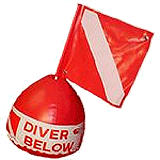
Photo from wikipedia
GPS buoy methodology is one of the main calibration methodologies for altimeter sea surface height calibration. This study introduces the results of the Qinglan calibration campaign for the HY-2A and… Click to show full abstract
GPS buoy methodology is one of the main calibration methodologies for altimeter sea surface height calibration. This study introduces the results of the Qinglan calibration campaign for the HY-2A and Jason-2 altimeters. It took place in two time slices; one was from August to September 2014, and the other was in July 2015. One GPS buoy and two GPS reference stations were used in this campaign. The GPS data were processed using the real-time kinematic (RTK) technique. The final error budget estimate when measuring the sea surface height (SSH) with a GPS buoy was better than 3.5 cm. Using the GPS buoy, the altimeter bias estimate was about -2.3 cm for the Jason-2 Geophysical Data Record (GDR) Version ‘D’ and from -53.5 cm to -75.6 cm for the HY-2A Interim Geophysical Data Record (IGDR). The bias estimates for Jason-2 GDR-D are similar to the estimates from dedicated calibration sites such as the Harvest Platform, the Crete Site and the Bass Strait site. The bias estimates for HY-2A IGDR agree well with the results from the Crete calibration site. The results for the HY-2A altimeter bias estimated by the GPS buoy were verified by cross-calibration, and they agreed well with the results from the global analysis method.
Journal Title: Journal of Oceanology and Limnology
Year Published: 2019
Link to full text (if available)
Share on Social Media: Sign Up to like & get
recommendations!